#Anangu people
Explore tagged Tumblr posts
Text
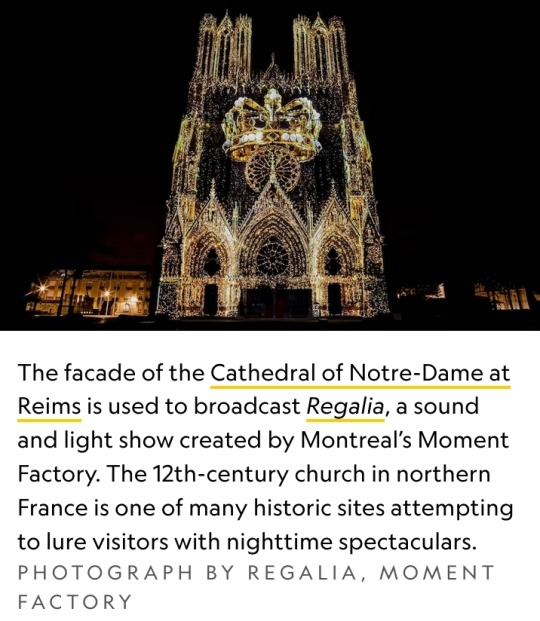
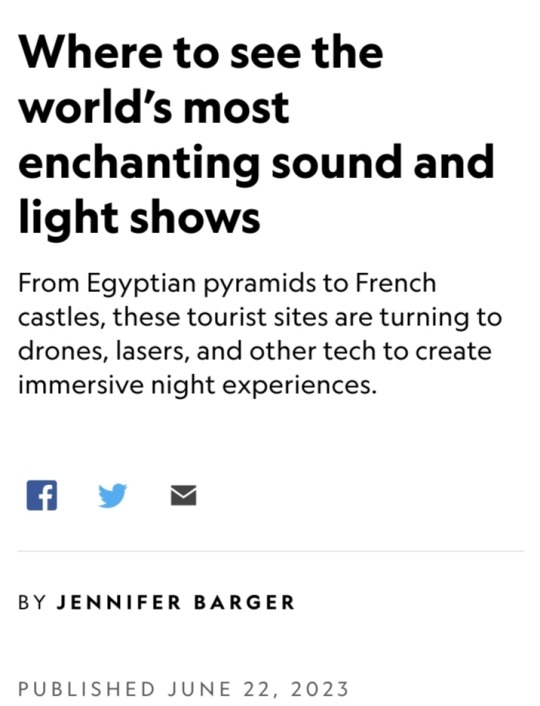
More than two miles long and 1,142 feet tall, Uluru, the red sandstone rock formation in Australia’s Northern Territory, wows travelers during the day.
But now, a new night spectacle Wintjiri Wiru illuminates the darkness adjacent to the monolith in a way that reveals Indigenous culture while dazzling with high-tech sound and lights.
“Humans are drawn to light—just think of how compelling sunsets are,” says Melbourne light artist Bruce Ramus, who designed the work in collaboration with the local Anangu people and Voyages Indigenous Tourism.
Wintjiri Wiru is just the latest offering—and newest technology — in the tradition of son et lumière (sound and light) shows, grand public spectacles projected on to (or close to) historic buildings and natural wonders.
These mash-ups of pageantry, culture, and art are experiencing a boom fueled by digital advances and tourist sites looking to attract visitors after dark.
Here’s where to see the latest shows, plus why visitors love these “virtual campfires.”
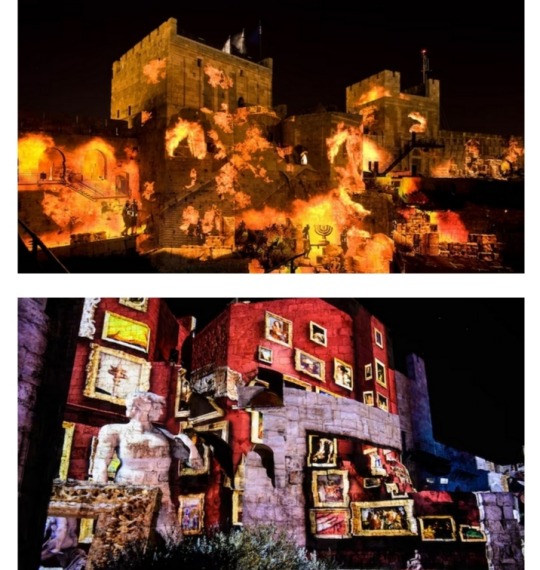
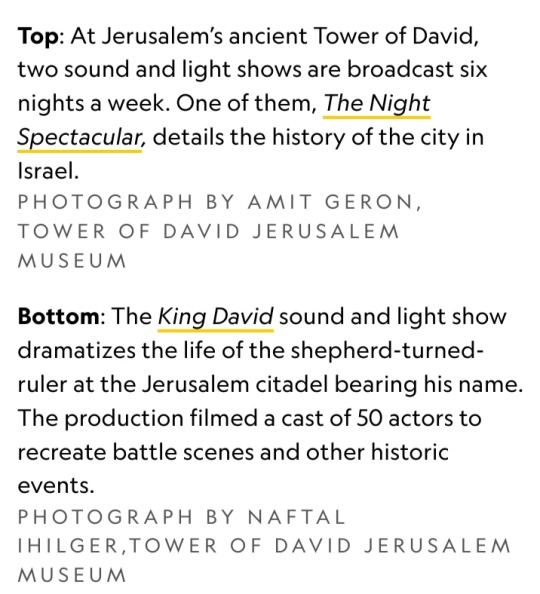
How did sound and light shows start?
Paul Robert-Houdin created the first sound and light show in 1952 at France’s Château de Chambord.
Music and narration played while slide projectors splashed colored lights on the 16th-century palace.
“We had the feeling that a new way of discovering and understanding monumental heritage was perhaps being born,” one observer wrote in Le Figaro newspaper.
The concept was a hit.
“Standing in the dark and being immersed in sounds and images creates a sense of enchantment,” says Jane Lovell, a professor of tourism at Canterbury Christ Church University in England.
In the following decades, other storied sites harnessed that magic, such as the Red Fort in Delhi, India, and Independence Hall in Philadelphia.
“There were captive audiences for these attractions, so the efforts were minimal—just light up these beautiful things that already existed,” says California light show producer Ryan Miziker.
Early technology was expensive and bulky: sofa-sized slide carousels, finicky stereo speakers that malfunctioned in bad weather.
The storytelling, if mostly historically accurate, could be clunky and lecturing.
At Egypt’s Pyramids at Giza, the still-running circa-1961 show features the Sphinx “narrating” a lofty spiel about ancient life as murky colored lights wash over the monuments.
youtube
https://youtu.be/anLYLqMyK1I
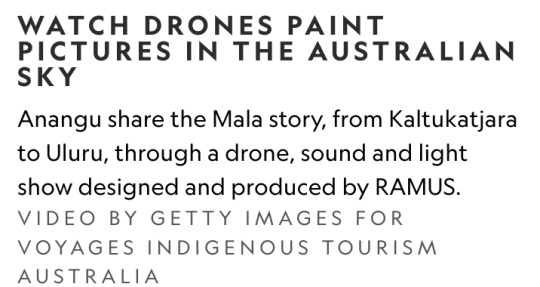
How tech took over light shows
“Son et lumieres started out as pretty rudimentary things—a castle would be lit up and a soundtrack would say, ‘this tower was built in 1592,’” says Ross Ashton of London’s Projection Studio, which designs extravaganzas for attractions from Welsh castles to Indian fortresses.
But by the 1990s, innovations in video, lasers, and audio meant creators could screen riveting, mind-bending shows.
“Digital video changed everything,” says Miziker.
“We had software to do 3-D mapping, which takes a round object like a globe and flattens it, or wraps any structure in overlapping, blending geometry.”
Sound evolved, too.
“Bells, spoken voices from different directions, or a fireball rolling, you can layer sound up, so it feels like a tapestry,” says Projection Studio’s sound artist Karen Monid.
Today’s sound and light shows are like mini action movies screened on historic buildings or natural wonders.
San Antonio’s The Saga wraps the 18th-century San Fernando Cathedral in sound effects (mariachi ballads, cannon blasts) and painterly images (folk dancers, renderings of the Alamo) to tell the story of the Texas city.
In Jerusalem, Israel, the ancient Tower of David has two night shows, one on city history and the other about the biblical shepherd-turned-ruler that gave the site its name.
Wintjiri Wiru harnesses LED lights, lasers, sound, and 1,100 drones to recount a legend from the Anangu, who consider Uluru sacred.
The show depicts mala (wallaby-rabbit) beings battling a gigantic devil dog spirit.
“Combine light with sound—in this case Anangu songs and other effects—and it’s like the desert is speaking,” says Ramus.
Other projects are more abstract, such as the new Aura Invalides show at Les Invalides in Paris, which fills the grand interiors of the historic military monument with surreal rays of colored light and outlines architectural elements in laser graffiti.
“People move around within the building, making it more like a 360-degree immersion than something didactical,” says Manon McHugh, a spokesperson for Moment Factory, the studio that created the show.
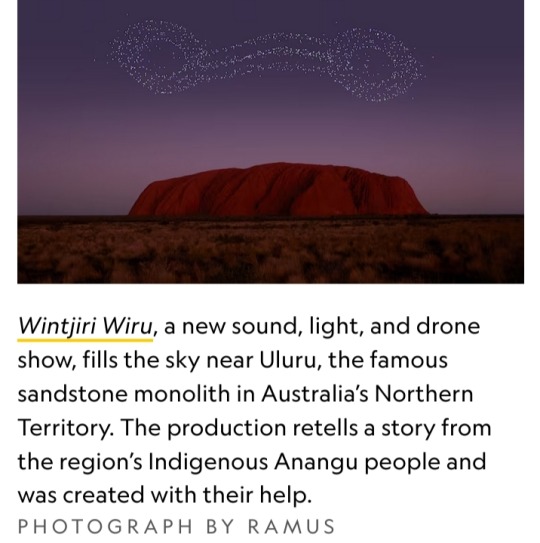
Why travelers love spectacles
Experts think people are drawn to these shows for their sense of wonder and spectacle.
“Sound and light shows are like fireworks—it’s impossible to look away,” says Miziker.
"Since audiences are sitting in the dark, there’s cognitive dissonance, with the atmosphere almost becoming its own entity,” says Lovell.
youtube

https://youtu.be/FV3XdOda3zM
Plus, in this age of Instagram, sound and light spectacles make ideal selfie backdrops or video ops.
“When Moment Factory started doing shows, we didn’t want people to have their phones out,” says McHugh.
Now, other digital production studios build in elements like photo booths to encourage participants to share their experiences.

How sound and light shows help tourist sites
Sound and light shows can be expensive and time-consuming to design.
(Wintjiri Wiru was developed over several years and cost $10 million.)
But many tourist attractions and cities are willing to shell out.
“They produce new income streams,” says Ashton. “People normally go home at night, but if you sell them a ticket to an illumination, they’ll come back.”
Many sound and light experiences in public, urban spaces — outside cathedrals, on city halls, across skyscrapers — are free, but paid for by cities to give visitors an excuse to stay an extra night.
“We used to think of tourism as a daytime activity, but there has been this tourist-ification of the night,” says Andrew Smith, a professor of urban experiences at England’s University of Westminster.
“Now cities want to attract people and keep them in town. It’s a commodification of the night, a way to extend economic and cultural activity.”
Studies indicate that these shows might even make city downtowns feel safer. “It starts to dematerialize the buildings,” says Ramus.
“You just see the lights, and our cities become transparent. They feel gentler.”
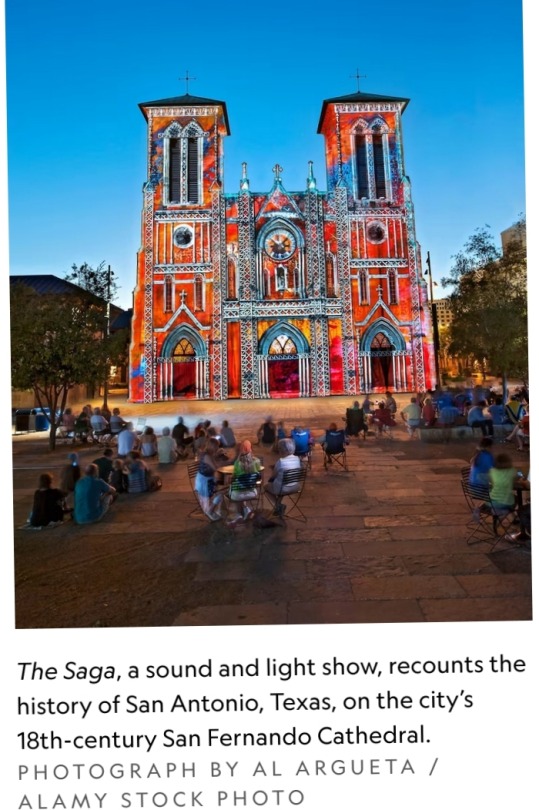
#Youtube#Wintjiri Wiru#son et lumière#sound and light shows#Paul Robert-Houdin#Château de Chambord#France#Pyramids at Giza#Cathedral of Notre-Dame#Regalia#Moment Factory#Uluru#Anangu people#Voyages Indigenous Tourism#The Night Spectacular#King David#Jerusalem#Projection Studio#San Fernando Cathedral#Tower of David#LED lights#drones#sound#lasers#Aura Invalides#National Geographic#Nat Geo#The Saga
4 notes
·
View notes
Text
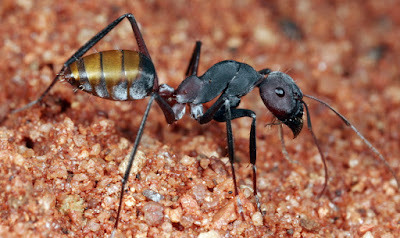

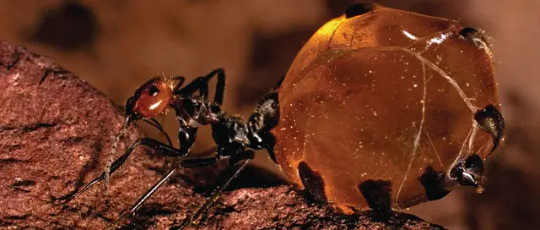
A Sweet Time with the Honeypot Ant
Camponotus inflatus, better known as the Australian honeypot ant or the black honey ant, or the yarumpa or wuukurta ant among Aboriginal Australians, is one of the most well-known members of the honeypot ant group. As their name implies, they are endemic to Australia. They can be found throughout the continent, but are most common in the arid desert and scrubland regions of central Australia.
Honeypot ants, including the Australian honeypot ant, are best known for their specialized worker ants known as repletes. Other castes of workers go out to forage for nectar and honeydew, and bring it back to the colony where it is fed to the repletes. The abdomens of these individuals swell as they are fed, so that they can hold several times their weight in food. In times of shortages, this food can then be regurgitated and fed to the workers and larvae. In addition to its workers, each colony can contain multiple queens; some colonies have been recorded harboring up to 6 queens, presiding over 1,000 workers.
Visually the replete and forager workers are quite similar to each other. Both have black bodies with gold striped abdomens. However workers remain rather small, at only 5-8 mm (0.19 - 0.31 in) in length, while repletes can grow up to 1.4 g (0.03 oz) in weight and about 15 mm (0.59 in) in length. When their abdomens become swollen with honey, they turn transparent to show the amber liquid inside.
Black honey ant nests are most commonly found near or under vegetation, particularly the Mulga bush from which workers harvest most of their food. In addition co collecting nectar from the flowers, workers also collect honeydew secreted by the sap-sucking insects that live in the leaves and roots of the bush. C. inflatus in turn is predated upon by lizards and birds. Many Aboriginal peoples, especially the Tjupan, Mutitjulu, Anangu, Arrernte, and other groups in northern Australia, have also traditionally harvested Australian honeypot ants as a delicacy.
Conservation status: C. inflatus has not been assessed by the IUCN. Its populations are widespread and so believed to be stable. While traditional Aboriginal harvesting has not posed a threat, increased commercial harvest for its pharmaceutical properties may put increased pressure on this species.
Photos
Steve Shattuck
Jean & Fred Hort
Wang & Pan et al.
#Australian honeypot ant#Hymenoptera#Formicidae#carpenter ants#ants#hymenopterids#insects#arthropods#deserts#desert arthropods#scrubland#scrubland arthropods#oceania#australia#north australia#west australia
131 notes
·
View notes
Text
Eurovision Fact #572:

The duo Electric Fields will be the first duo ever to represent Australia at Eurovision this May with their song 'One Milkali (One Blood)'. The song will be sung partially in the Aboriginal language Yankunytjatjara, the language of the Anangu peoples.
[Source]
"Electric Fields to represent Australia in Malmö," Eurovision.tv.
#esc facts oc#eurovision#eurovision song contest#esc#eurovision facts oc#esc 2024#electric Fields#Eurovision 2024#aboriginal australian#Yankunytjatjara
25 notes
·
View notes
Text




Meaning ‘many heads’, Kata Tjuta is sacred to the local Aboriginal Anangu people, who have inhabited the area for more than 22,000 years.
They don’t visit the site any longer.
It’s really hard to capture the grandeur of the place, the last shot through a van window comes close.
8 notes
·
View notes
Text










Kunmanara (Ruby Tjungawa) Williamson
Born: c 1940 near Wingellina WA
Died: 2012
Pitjantjatjara language group
Art Centre: Tjala Arts, Amata
‘I have shared my culture in my paintings for a long time, but culture is in everything I do - when I'm sitting down thinking, when I'm singing, when I'm making fire and cooking food, when I'm talking my language - It's just Anangu way and children know that way from when they're born’. Mrs Williamson, 2011.
Kunmanara (Ruby Tjungawa) Williamson was a Pitjantjatjara senior law woman committed to fostering traditional law and culture, story-telling, hunting, punu (wood) carving, dancing and painting. She was born in the bush around 1940 and came to live in Amata with her family when she was a young girl.
Mrs Williamson painted with Tjala Arts (formerly Minymaku Arts) since 2000 and was one of Tjala's most revered and charismatic artists. She received ongoing attention and acclaim for her unique and contemporary style. Ruby passed away in 2014.
note: Kunmanara is a term of respect used to replace the first name of Anangu who have died.
Mrs Williamson depicted the Musgrave Ranges, behind Amata. The large dark areas are the mountains from the side and above. She has also depicted Ultukunpa or Honey Grevillea flower which is a favourite bush food of the Anangu people. Ultukunpa grows in the sandy soils on the plains. The circles are kapi tjukula or rock holes where water collects after the rains.
https://www.ourstarshazelhurst.com.au/ruby-tjangawa...
21 notes
·
View notes
Text
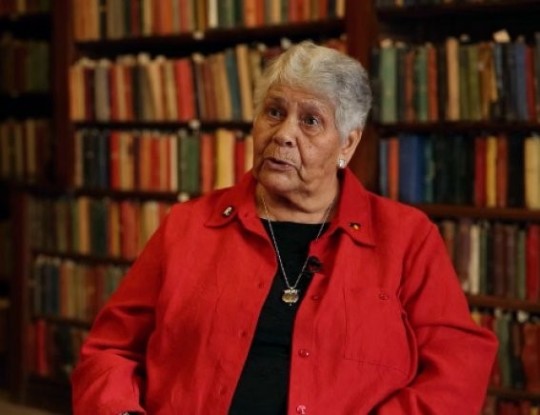
Lowitja O’Donoghue was told as a child she would never make anything of her life, but the Yankunytjatjara leader went on to change the course of history through her advocacy for Australia’s Aboriginal and Torres Strait Islander peoples.
Taken from her mother and her culture at two years old as one of the stolen generations, she said the harsh discipline she experienced growing up in a loveless mission home ignited her appetite for social justice and equality for First Nations communities.
The life of O’Donoghue, who has died on Kaurna Country in South Australia aged 91, was shaped by the prejudice she experienced as a woman born between two cultures – Aboriginal and white – and by her refusal to be defined by it. Her formidable capacity for activism was triggered by her battle to become the first Aboriginal nurse at the Royal Adelaide hospital, despite the matron repeatedly telling her to “go nurse your own people in Alice Springs”.
At the time, O’Donoghue had no idea where she came from, but she knew it was not Alice Springs/Mparntwe.
From a working life that began as a 16-year-old servant, O’Donoghue went on to become the first Aboriginal person named a Companion of the Order of Australia, the first to address the UN general assembly and the first chair of the now defunct Aboriginal and Torres Strait Islander Commission, overseeing its most successful years.
She was a lead negotiator alongside then prime minister Paul Keating in the drafting of the Native Title Act that arose from the high court’s 1992 Mabo decision. It was Keating who shortlisted O’Donoghue for a vice-regal position, one that ultimately went to Sir William Deane.
In his 2018 oration named in her honour, Noel Pearson called O’Donoghue “our greatest leader of the modern era”.
“Resolute, scolding, warm and generous – courageous, steely, gracious and fair. She held the hardest leadership brief in the nation and performed it bravely and with distinction,” he said of her guidance during native title negotiations.
O’Donoghue was the fifth child of Lily, a Yankunytjatjara woman, and Tom O’Donoghue, an Irish stockman. She was born on Anangu Pitjantjatjara Yankunytjatjara lands at Granite Downs station in South Australia in 1932. While never certain of her birthdate, O’Donoghue celebrated it on 1 August, the date given to her by white missionaries.
“All I know about my birth is that I was actually born in the bush, like all Aboriginal children at those times. It was a traditional birth attended by the grandmothers as, of course, is the traditional way. And the only other thing I know, of course, is that I never had a birth certificate. And, of course, I still don’t have a birth certificate,” she told the Australian Biography project in 1994.
She never knew her father, and when she was two, she and two of her sisters were taken from their mother by missionaries acting on behalf of the Aborigines Protection Board. The girls were sent to live at what was known as the Colebrook Home for Half-Caste Children, where they were forbidden to speak their language or ask about the whereabouts of their parents. O’Donoghue did not see or hear from her mother again for more than 30 years. In a 2011 interview , she recalled the grief of her childhood, saying she did not remember ever “being kissed or touched or loved or anything like that”.
In a 2006 interview, she said: “I didn’t like it of course, particularly when we were told our culture was of the devil. And because I heard that too many times I became quite rebellious because I was always asking the questions: Who am I? Where did I come from?”
O’Donoghue attended Unley general technical high school, but at 16 was sent to Victor Harbour as a servant for a large family. Two years later, she began basic nursing training before attempting to transfer to the Royal Adelaide hospital to continue her education. When the matron refused her because she was Aboriginal, O’Donoghue took her battle to the state premier and anyone else in government who would listen to her case.
“I’d resolved that one of the fights was to actually open the door for Aboriginal women to take up the nursing profession, and also for those young men to get into apprenticeships,” she said in 1994.
O’Donoghue was eventually accepted and spent 10 years at the hospital, including as a charge nurse. She travelled to India to nurse, an experience that honed her determination to secure the rights of Indigenous peoples in her later senior leadership positions within various agencies of Aboriginal affairs and the public service.
While nursing at Coober Pedy in the late 1960s, O’Donoghue was recognised by a group of Aboriginal people. From them, she learned that her birth name was Lowitja, and that her mother was a heartbroken woman living in appalling conditions in Oodnadatta. When mother and daughter eventually reunited, there was tension and a language barrier. Her biographer, Stuart Rintoul, writes that she would later talk of their reunion as a lesson in the “limitlessness of hope and the strength of patience”.
O’Donoghue told the Australian Biography project that reconnecting with her Aboriginal family brought “new meaning and a whole new dimension” to her life, moving her to devote herself entirely to the wellbeing of Aboriginal and Torres Strait Islander peoples.
In 1979, O’Donoghue married Gordon Smart, a hospital orderly she had met in the late 1960s. He died in 1991. The couple did not have children together, as O’Donoghue chose to dedicate her life to her work.
O’Donoghue was made a Member of the Order of Australia in 1977, invested as a Commander of the Order of the British Empire in 1983 and made a Companion of the Order of Australia in 1999. In 1984, she was named Australian of the Year and in 2005 a Dame of the Order of St Gregory the Great, a papal award. She holds multiple honorary doctorates and fellowships and was patron of the Lowitja Institute.
🔔 Lowitja O’Donoghue, advocate for Aboriginal Australians: born 1932; died on 4 February 2024 aged 91.
Daily inspiration. Discover more photos at Just for Books…?
11 notes
·
View notes
Text
Eurovision 2024 - Meet the Malmö Participants

🇦🇺 Australia - Electric Fields - One Milkali (One Blood)
Electric Fields are the first duo to represent Australia at the Eurovision Song Contest.
Fans might well remember the pair from SBS’ 2019 national selection show, Eurovision – Australia Decides, where they came a close second to Kate Miller-Heidke with their unforgettable track 2000 And Whatever.
The extraordinary voice of Zaachariaha Fielding and the brilliance of producer and keyboardist Michael Ross unite in a way that merges traditional living culture with music that ranges from soulful pop to epic-scale electronica.
Their song incorporates Yankunytjatjara; an Aboriginal language of the Anangu peoples, one of the oldest living cultures on earth.
#Eurovision#Eurovision Song Contest#Eurovision 2024#Eurovision Song Contest 2024#Malmö#Australia#Electric Fields#One Milkali (One Blood)#Spotify
2 notes
·
View notes
Note
On the nuclear bombing, the British tested nuclear weapons in Australia in the 1950s and 1960s. Not only were the Australian personnel who participated not properly briefed, at no stage was the impact on the Anangu Pitjantjatjara people, especially those who lived on country, ever properly considered, nor was there much effort made into warning them (one man, covering hundreds and thousands of kilometres by himself - he was also criticised for "placing the affairs of a handful of natives above those of the British Commonwealth of Nations"). The British also did a haphazard job in cleaning the site when they were done and covered it up - nearly 20 years after they'd left, when the Australian government was about to hand over the site to the traditional owners, major and widespread plutonium contamination was found on across 3,200 square kilometres. 10 years later, the British government gave the Australian government £20 million towards the A$101 million cost of cleaning the site they contaminated. But surely there can't have been racism or colonialist mindset in choices made for the testing, can there?🙄
Oh, we haven't even touched the entire sordid legacy of post-1945 nuclear testing and its predominant and disproportionate impact on Native and indigenous people. This was the same particularly with the American test site of Bikini Atoll in the South Pacific, where they just packed the inhabitants out and never let them return, and the massive Soviet displacement of indigenous Siberian people both as a policy of control and to open up Arctic test sites. Because obviously when detonating a nuclear bomb, you do it as far away from your own home as possible, but you don't care who else might be affected by it. Especially when those people are already far away from the center of power both geographically and socially, and thus already suffer for that marginalisation.
Anyway, yes: like any other instrument of supreme violence and military power in the western world, the history of nuclear testing/nuclear weapons is intrinsically and inextricably shaped by racism on multiple levels. Both in how they were developed, who they were used on, and who their legacy continues to distort and displace even today.
24 notes
·
View notes
Text
Why this is Australia's most queer Eurovision yet
New Post has been published on https://qnews.com.au/why-this-is-australias-most-queer-eurovision-yet/
Why this is Australia's most queer Eurovision yet

The Eurovision Song Contest is back for another year and it may just be the queerest yet for Australia.
This year’s edition will be held in Malmö, Sweden following Loreen’s historic win last year with Tattoo.
Australia is back for another year and will be represented by the truly fabulous Electric Fields with their song One Milkali (One Blood).
Queer identity
Electric Fields is made up of Zaachariaha Fielding and Michael Ross and they put their queer identity at the very forefront of their music.
Michael told the Guardian about growing up gay in conservative Queensland.
“I had to try to walk differently, I had to move my hands differently. And it’s a very unique experience that only queer people would really understand – pretending that you’re the opposite of what you are,” he said.
Zaachariaha was raised in the remote desert community of Mimili in South Australia’s Anangu Pitjantjatjara Yankunytjatjara lands.
“With my family, I didn’t even come out … There was no reason for it. My brother reminded me of it a few years ago – he said, ‘You know, you didn’t really come out to us.’ I didn’t really verbalise it, I was just more being it,” Zaachariaha told the Guardian.
youtube
Michael shared with QNews the importance of being authentic.
“What is always a focus when we create a track is that both Z and my authenticity as people, as artists are truthfully woven into the lyrics and music. Because of this, our queerness naturally shines through same can be said for when we perform,” he said.
And why is the queer community so drawn to Eurovision?
“One of my core values is equality and I don’t believe in stereotypes but is it just me or are the queers just naturally more creative, I think we are,” Michael explains.
“Eurovision is one of the freest creative platforms around.”
Courtney Act joins Australia’s team
Not only are the entries queer but so is the SBS team!
Comedian Joel Creasey will be on commentary duties (alongside Myf Warhurst) while Courtney Act will be providing behind-the-scenes coverage from backstage.
Although Courtney is there for TV duties, she still has performance ambitions.
“Think of this as reconnaissance. I’m going into the Eurovision arena to watch it,” Courtney said.
“And I am, only in my own mind, going to take notes and see what it’s all about, how it works. So that when I get there in the future, I’ll be better acclimatised to represent Australia.”
youtube
Brendan Maclean is in support
Queer singer-songwriter and actor Brendan Maclean will be a backing artist on stage for Australia’s performance.
He told QNews about his excitement of being involved.
“As a backing vocalist, you’re being asked to help debut Electric Fields, these beautiful two people I have adored for years, to over one hundred million new fans. So while it’s a fun job it’s one I take very seriously,” he said.
“There’s no room for error, you get one shot at this.”
Where to watch
Live broadcast on SBS and SBS On Demand:
Semi Final 1 – Wednesday 8 May at 5:00am AEST (Australia performing) Semi Final 2 – Friday 10 May at 5:00am AEST Grand Final – Sunday 12 May at 5:00am AEST
Primetime broadcast on SBS and SBS On Demand
Semi Final 1 – Friday 10 May at 7:30pm AEST (Australia performing) Semi Final 2 – Saturday 11 May at 7:30pm AEST Grand Final – Sunday 12 May at 7:30pm AEST
More on Eurovision:
Courtney Act has a big plan for her trip to Eurovision 2024
Brendan Maclean’s surprise Eurovision news for Australia
Electric Fields in Sweden for first Eurovision rehearsals
UK’s Olly Alexander reveals “dirty” Eurovision rehearsal
ABBA rules out reunion on 50th anniversary of Eurovision win
For the latest LGBTIQA+ Sister Girl and Brother Boy news, entertainment, community stories in Australia, visit qnews.com.au. Check out our latest magazines or find us on Facebook, Twitter, Instagram and YouTube.
1 note
·
View note
Note
hi leafanon here, other anon is dumb but im curious, ive always heard that "aborigine" is offensive and the term youre supposed to use is "aboriginal." which is correct?
G'day leafanon!
Reckon this is a question better suited for a blackfella (which I'm not) but in my own experience of the folks I've met "Aboriginal" is preferred in the cities and "Aborigine" is preferred in the Outback. Really it depends on who you ask. Some blackfellas are alright with the term Aborigine, others aren't.
About ten years or so ago people really started to get into the PC culture of "everything is offensive" and now you'll cop a lot of shit for saying "Aborigine" in cities. That said, also in my experience the people that hang shit on you for saying it are rarely Indigenous and are usually white people. Folks outside of cities generally don't care and ascribe more to the traditional meaning of the word and are reclaiming it from whatever negative connotation it might've had in the past.
In the Outback (among the people I've met at least, mostly Anangu and Gaagudju, which is what my mob and Jacko are) the preferred term is "Aborigine." Aborigine is the noun for a First People individual. Aboriginal is an adjective. Jack is an Aborigine. A spear made by his mob would be Aboriginal.
Whatever you do, DO NOT ABBREVIATE THE WORD by reducing it to the first three letters of the word or you will be punched. I know Aussies abbreviate everything but that abbreviation has massive negative connotation and isn't acceptable to use as it's the Aborigine's equivalent of the n-word. If you're a tourist you generally get a pass because it's not likely that you know it's a slur, but if you're an Aussie you can fully expect to have a fight on your hands if you say it.
11 notes
·
View notes
Text
It doesn't happen often, but when sacred water meets this sacred stone, magic happens.
Uluru / Ayers Rock is considered a sacred site by the Anangu people and is deeply connected to their ancestral stories, spiritual beliefs, and cultural practices. It is believed to be the physical evidence of the activities of ancestral beings who created the world during the Dreamtime, a period of creation and transformation in Indigenous Australian mythology.
According to the Anangu, the rock itself and the surrounding landscape contain numerous sacred sites, rituals, and ceremonial grounds that are essential to their cultural identity and survival.
Uluru is believed to possess a powerful energy that can be experienced and harnessed by those who visit. Some people describe feeling a sense of awe, tranquility, and spiritual connection when they are in its presence. This has led to Uluru becoming a popular destination for meditation, yoga retreats, and spiritual gatherings.
It is crucial to approach the site with respect, understanding, and sensitivity to its cultural and spiritual importance to the Anangu people. Visitors are encouraged to learn about the cultural protocols and guidelines for visiting the area and to engage in responsible tourism practices that respect the land, its traditional custodians, and their ongoing connection to Uluru.
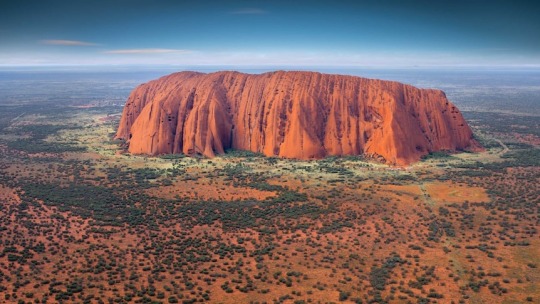
2 notes
·
View notes
Text
Best Place to Visit in Australia First Time
Australia is a vast and diverse country. It offers a unique blend of natural beauty and vibrant cities. Planning your first trip to Australia can be exciting yet overwhelming. There are so many incredible places to see and experiences to enjoy. From stunning beaches to iconic landmarks, the choices are endless. Whether you crave adventure, relaxation, or cultural experiences, Australia has something for everyone. This blog will guide you through the best places to visit on your first trip. Discover the must-see destinations that will make your journey unforgettable. Let's explore the wonders of Australia together! Visit Place

Sydney
Best place to visit in Australia first time Embark on an unforgettable journey through Sydney, Australia’s vibrant cultural and scenic gem. Visit world-famous landmarks like the Sydney Opera House and Harbour Bridge, relax on the golden sands of Bondi Beach, and explore the lush Royal Botanic Gardens. Experience the city's rich history in The Rocks, indulge in fresh seafood at Darling Harbour, and take in breathtaking views from Sydney Tower. Perfect for adventurers and culture enthusiasts alike, this tour showcases the best of Sydney's charm and beauty!
Melbourne
Best place to visit in Australia first time Escape to Melbourne, a city that blends art, cuisine, and vibrant street culture seamlessly. Stroll through laneways adorned with colorful street art, enjoy world-class dining and coffee, and explore iconic landmarks like Federation Square and the Royal Botanic Gardens. Don’t miss the bustling Queen Victoria Market or a scenic drive along the Great Ocean Road. Melbourne’s unique charm and creative energy make it a must-visit destination!
Great Barrier Reef
Best place to visit in Australia first time Dive into the world’s largest coral reef system and experience the breathtaking beauty of the Great Barrier Reef. Explore vibrant marine life, snorkel in crystal-clear waters, or take a glass-bottom boat tour to marvel at this UNESCO World Heritage Site. Whether you’re an adventure seeker or a nature lover, the Reef promises an unforgettable journey into one of the planet’s most extraordinary ecosystems.
Uluru
The Best place to visit in Australia first time awe-inspiring beauty of Uluru, the iconic red monolith at the heart of Australia’s outback. Witness its vibrant colors shift with the sun, learn about its deep cultural significance to the Anangu people, and explore the surrounding desert landscapes. Whether hiking, stargazing, or experiencing an unforgettable sunset, Uluru offers a truly magical adventure.
Cairns and Daintree Rainforest
Explore the best place to visit in Australia first-time wonders of Cairns and the ancient Daintree Rainforest, a UNESCO World Heritage site. Immerse yourself in lush greenery, discover unique wildlife, and stroll along pristine beaches where the rainforest meets the reef. From scenic river cruises to guided walks, this tour offers an unforgettable journey into one of the world’s oldest and most diverse ecosystems. Perfect for nature enthusiasts and adventurers alike!
Gold Coast
Experience the best place to visit in Australia first time perfect blend of sun, surf, and excitement on the Gold Coast. Relax on golden beaches, explore lush hinterlands, and enjoy world-class shopping and dining. Thrill-seekers will love the theme parks, while nature lovers can unwind in serene national parks. Whether you’re seeking adventure or relaxation, the Gold Coast has it all!
Tasmania
Best place to visit in Australia first time Escape to Tasmania, an island of breathtaking wilderness, charming towns, and rich history. Explore the rugged beauty of Cradle Mountain, walk along pristine beaches in Freycinet National Park, and delve into the intriguing past of Port Arthur. Savor local gourmet food and wine, and immerse yourself in Tasmania's unique wildlife and serene landscapes. A perfect getaway for nature lovers and adventurers!
Adelaide and Barossa Valley
Discover the charm of Adelaide and the world-renowned Barossa Valley. Best place to visit in Australia first time Stroll through Adelaide’s vibrant markets and picturesque streets before venturing to the Barossa, where rolling vineyards and award-winning wineries await. Indulge in gourmet food, savor fine wines, and soak in the breathtaking countryside views. Perfect for wine lovers and culture enthusiasts alike!
Perth and Rottnest Island
Best place to visit in Australia first time Explore the vibrant city of Perth, with its stunning waterfront, lively cultural scene, and lush parks. Then, escape to the idyllic Rottnest Island, home to pristine beaches, crystal-clear waters, and the famous quokkas. Whether cycling around the island, relaxing on secluded beaches, or enjoying the local wildlife, this tour offers the perfect blend of city excitement and island tranquility.
Whitsundays
Best place to visit in Australia first time Escape to the Whitsundays, a collection of 74 tropical islands nestled in the heart of the Great Barrier Reef. Immerse yourself in the breathtaking beauty of white sand beaches, crystal-clear waters, and vibrant coral reefs. Whether you’re sailing, snorkeling, or simply relaxing on the iconic Whitehaven Beach, the Whitsundays offer an unforgettable island paradise experience.
Canberra
Discover the Best place to visit in Australia first time political and cultural heart of Australia in Canberra. Explore world-class museums, galleries, and landmarks like the Australian War Memorial and the National Museum. Stroll around Lake Burley Griffin, visit Parliament House, and enjoy the city’s vibrant food scene. With its mix of history, nature, and modern attractions, Canberra offers a unique and enriching experience for every traveler.
Blue Mountains
Escape to the best place to visit in Australia for the first time Blue Mountains, just outside Sydney, where dramatic cliffs, lush valleys, and scenic waterfalls await. Explore iconic sights like the Three Sisters rock formation, take a scenic cable car ride, or hike through dense eucalyptus forests. With its stunning views, tranquil atmosphere, and outdoor adventures, the Blue Mountains offer the perfect escape into nature.
Darwin and Kakadu National Park
Discover the best place to visit in Australia the vibrant city of Darwin, with its lively waterfront, rich history, and multicultural charm. Then, venture into Kakadu National Park, a UNESCO World Heritage site filled with ancient rock art, diverse wildlife, and stunning landscapes. From wetlands teeming with life to dramatic cliffs and waterfalls, this tour offers a perfect blend of adventure, nature, and cultural heritage in the heart of the Top End.
Phillip Island
Experience the Best place to visit in Australia first time natural beauty and wildlife wonders of Phillip Island, just a short drive from Melbourne. Watch the world-famous Penguin Parade, where little penguins return to shore at sunset, and explore the rugged coastline with its stunning beaches and coastal walks. Visit the Koala Conservation Centre, spot seals at the Nobbies, and enjoy the island’s serene atmosphere, making it the perfect destination for nature lovers and families.
Byron Bay
Best place to visit in Australia first time Escape to Byron Bay, a laid-back beach town known for its stunning coastline, vibrant arts scene, and relaxed atmosphere. Enjoy surfing on world-class waves, relax on pristine beaches, and explore lush hinterlands. With its eclectic mix of cafes, boutiques, and wellness retreats, Byron Bay offers the perfect blend of natural beauty, culture, and tranquility. Ideal for those seeking a peaceful coastal getaway.
Exploring Australia offers unforgettable experiences. Sydney's iconic Opera House wows visitors. Melbourne's cultural vibe captivates. The Great Barrier Reef amazes with marine beauty. Each destination promises unique adventures. Plan your trip, and embrace the journey. Discover the best places Australia offers. Enjoy your first visit and create lasting memories. Safe travels! Read More
#travel#traveling#best places to travel#Visit in Australia#australia#byron bay#phillip island#melbourne#great barrier reef#uluru#Cairns and Daintree Rainforest#air travel#best places#cheap flight fares#cheap flight ticket#cheap flight deals#beautiful place#business class flight
0 notes
Text
Top Ten Must-See Experiences in Australia: The Best Things to Do Across the Land Down Under
Australia is a land of stunning natural beauty, vibrant cities, and a unique blend of cultures. From the iconic landmarks of Sydney to the untouched wilderness of Tasmania, there is no shortage of exciting experiences to be had. Whether you're an adventure seeker, a nature lover, or someone simply looking to relax, Australia's vast and varied landscape offers something for everyone. In this blog, we’ll take a look at the top ten best things to do in Australia that will make your trip unforgettable.
1. Visit the Great Barrier Reef
No trip to Australia is complete without a visit to the Great Barrier Reef. Located off the coast of Queensland, this UNESCO World Heritage-listed natural wonder is the largest coral reef system in the world. It spans over 2,300 kilometers and is home to thousands of marine species. Snorkeling or diving here offers a once-in-a-lifetime opportunity to explore vibrant coral gardens, swim alongside tropical fish, sea turtles, and even spot the occasional reef shark. You can also opt for a scenic flight to view the reef from above, providing a completely different perspective.
2. Explore Sydney’s Iconic Landmarks
Sydney is Australia’s largest and most famous city, and it’s filled with landmarks that need no introduction. Start with the iconic Sydney Opera House, a marvel of modern architecture that sits majestically on the Sydney Harbour. Just across from it, you’ll find the Sydney Harbour Bridge, where you can take a daring climb to the top for breathtaking panoramic views of the harbor. Don’t forget to stroll through the vibrant The Rocks district, which offers a mix of historic buildings, markets, and cozy pubs, or relax on the beautiful sands of Bondi Beach.
3. Hike in the Blue Mountains
If you're a fan of hiking and natural beauty, the Blue Mountains are a must-see. Located just outside of Sydney, this mountainous region is renowned for its dramatic cliffs, deep valleys, and lush rainforests. There are numerous trails to explore, with varying levels of difficulty, making it accessible for everyone. A popular hike is the Three Sisters Walk, which leads to a stunning view of the Three Sisters rock formation and the Jamison Valley below. Don’t miss the chance to ride the Scenic Railway or take the Scenic Skyway for panoramic views of the landscape.
4. Relax on Whitehaven Beach
If you’re dreaming of pristine white sand and crystal-clear waters, head to Whitehaven Beach in the Whitsunday Islands. This 7-kilometer stretch of beach is famous for its pure silica sand, which stays cool underfoot even on the hottest days. The surrounding waters are perfect for swimming, snorkeling, and sailing. Accessible by boat, seaplane, or helicopter, Whitehaven Beach is a true paradise and one of the most beautiful beaches in the world.
5. Experience the Outback at Uluru
A trip to Australia’s Outback is an experience like no other, and the best way to immerse yourself in this vast and remote desert landscape is by visiting Uluru (formerly known as Ayers Rock). Uluru is a massive sandstone monolith located in the heart of the Northern Territory, and it holds deep cultural significance for the local Anangu people. You can take a sunrise or sunset tour to see the rock change colors, hike around its base, and learn about its cultural importance. Nearby, you can explore the Kata Tjuta rock formations and learn about the region’s unique wildlife.
6. Go Wine Tasting in the Barossa Valley
Australia is home to some of the world’s best wines, and a visit to the Barossa Valley in South Australia is a must for wine enthusiasts. This region is famous for its Shiraz and other red wines, as well as its beautiful rolling hills and vineyards. You can tour wineries, sample exquisite wines, and enjoy gourmet food at the region’s many restaurants. Don’t miss a visit to the Penfolds Barossa Valley Cellar Door, where you can learn about the history of the famous Penfolds wine brand and taste some of their signature releases.
7. Visit the Tasmanian Wilderness
Tasmania is one of Australia’s hidden gems, offering pristine wilderness, towering forests, and rugged coastlines. A UNESCO World Heritage-listed site, the Tasmanian Wilderness is a haven for nature lovers and adventure seekers. You can hike the Overland Track, one of Australia’s most iconic multi-day treks, which takes you through alpine meadows, ancient rainforests, and past sparkling lakes. Alternatively, take a scenic drive along the Great Eastern Drive, where you can stop at secluded beaches and charming villages, or visit the Freycinet National Park, home to the stunning Wineglass Bay.
8. Swim with Whale Sharks at Ningaloo Reef
For a unique underwater adventure, head to Ningaloo Reef in Western Australia, where you can swim with the gentle giants of the ocean: whale sharks. These majestic creatures, which can grow up to 12 meters in length, migrate to the reef every year between March and July. Joining a guided tour will allow you to swim alongside these awe-inspiring animals, a truly unforgettable experience. Ningaloo Reef is also home to vibrant coral reefs, making it a fantastic spot for snorkeling and diving.
9. Discover Melbourne’s Food and Culture
Known as the cultural capital of Australia, Melbourne is a city that thrives on food, art, and entertainment. You can explore the city’s famous laneways, which are lined with street art, boutique cafes, and hidden bars. The Queen Victoria Market is a must-visit for food lovers, offering everything from fresh produce to gourmet treats. Melbourne is also home to a vibrant coffee culture, with countless cafes serving up some of the best coffee in the world. If you're a fan of the arts, check out the National Gallery of Victoria or catch a performance at the Melbourne Theatre Company.
10. Go to Kangaroo Island
Located off the coast of South Australia, Kangaroo Island is a sanctuary for wildlife lovers. Known for its population of kangaroos, koalas, and sea lions, the island offers numerous opportunities to get up close with Australia’s iconic animals. Explore the pristine beaches, dramatic cliffs, and dense forests of the island, and don’t miss the chance to see the Remarkable Rocks and Admirals Arch. The island is also famous for its delicious local produce, including honey, wine, and fresh seafood.
Conclusion
Australia is a land of adventure, natural beauty, and unique experiences. From vibrant cities to stunning landscapes, the Top Ten Best Things to Do in Australia offer something for every type of traveler. Whether you're looking to explore the iconic Great Barrier Reef, hike through the dramatic Blue Mountains, or relax on the pristine beaches of the Whitsunday Islands, Australia has it all. Each destination offers a memorable experience, making Australia a top choice for travelers seeking adventure, culture, and relaxation all in one place. With so many remarkable things to see and do, you'll want to make sure to check off the Top Ten Best Things to Do in Australia during your visit.
0 notes
Text
Top Glamping Destinations You Can’t Miss in 2024
As we approach 2024, glamping—a luxurious blend of glamorous and camping—is gaining even more traction among travelers seeking outdoor adventures with the comfort of modern amenities. No longer do you have to choose between rugged camping or luxury hotels. Glamping allows you to immerse yourself in nature while still enjoying the perks of a comfortable bed, electricity, and sometimes even a hot tub. Whether you’re planning a romantic getaway, a family vacation, or a solo escape, these top glamping destinations offer the ultimate outdoor experience for 2024.
1. Under Canvas Zion – Utah, USA
If you’re seeking a unique experience near one of the world’s most stunning national parks, Under Canvas Zion is an ideal choice. Located just minutes away from Zion National Park, this destination combines luxury tents with breathtaking views of red rock canyons. The canvas tents offer private bathrooms, wood-burning stoves, and king-sized beds, ensuring that you can unwind after a day of hiking and exploring.
With guided tours, horseback riding, and canyoneering excursions available, your adventure doesn’t stop when you return to camp. The star-studded skies and the serene desert landscape make this one of the top glamping spots for 2024.
2. Longitude 131° – Northern Territory, Australia
Australia is known for its rugged beauty, and Longitude 131° gives you a front-row seat to the country's natural wonders. Located near Uluru (Ayers Rock), this luxury tented camp offers an immersive experience in the heart of the Australian outback. The tents are more like luxury suites, complete with air conditioning, rain showers, and plush bedding.
One of the best parts about staying at Longitude 131° is the stunning views of Uluru, visible right from your tent. You’ll also have access to private guides for cultural experiences, such as learning about the indigenous Anangu people or enjoying a scenic helicopter ride over the desert. For a high-end, immersive glamping experience, this destination is not to be missed.
3. The Resort at Paws Up – Montana, USA
Tucked away in the wilderness of Montana, The Resort at Paws Up offers a glamorous escape into the untamed beauty of the American West. Known for its wide-open spaces, luxurious safari-style tents, and top-notch service, this resort delivers an unforgettable glamping experience. Each tent comes with heated floors, en-suite bathrooms, and private decks.
Activities include everything from horseback riding and fly fishing to hot air ballooning and ATV adventures. Guests can also indulge in spa treatments, fine dining, and even a glamping butler to ensure every need is met. It’s the perfect place for those who want to combine outdoor adventure with five-star luxury.
4. Whitepod Eco-Luxury Hotel – Valais, Switzerland
For those seeking a more eco-friendly experience, the Whitepod Eco-Luxury Hotel in Switzerland offers a sustainable glamping option nestled in the Swiss Alps. The futuristic-looking pods, perched on a mountainside, offer panoramic views of the Dents-du-Midi mountain range and are fully equipped with luxury amenities, including wood-burning stoves and private bathrooms.
In the winter, guests can enjoy skiing, snowboarding, and sledding right outside their pods, while summer offers hiking and paragliding adventures. This eco-conscious resort uses minimal energy and promotes sustainable tourism, making it a top choice for environmentally aware travelers in 2024.
5. Aman-i-Khas – Rajasthan, India
Located on the edge of Ranthambore National Park, Aman-i-Khas offers a regal glamping experience that blends luxury with wildlife exploration. The resort’s tented suites draw inspiration from Mughal hunting parties, featuring elegant interiors, king-sized beds, and spa-like bathrooms.
Aman-i-Khas is a gateway to some of India’s most spectacular wildlife, including Bengal tigers and leopards. With daily safaris, meditation sessions, and personalized service, this glamping experience is perfect for those looking to combine luxury with a once-in-a-lifetime wildlife encounter.
6. Clayoquot Wilderness Lodge – British Columbia, Canada
In the heart of Vancouver Island’s untamed wilderness lies the Clayoquot Wilderness Lodge, an off-the-grid retreat that offers guests the ultimate escape from civilization. Accessible only by seaplane or boat, this luxury lodge provides a combination of safari-style tents and modern amenities.
Clayoquot offers a wide range of activities, from whale watching and kayaking to bear tracking and guided hikes. After a day of adventure, unwind in your tent, which comes complete with heated floors, antique furniture, and plush bedding. For nature lovers looking for a remote yet luxurious glamping experience, Clayoquot Wilderness Lodge is an unmatched destination.
7. Wadi Rum Bubble Luxotel – Jordan
If you’ve ever dreamed of staying in a futuristic bubble in the desert, Wadi Rum Bubble Luxotel in Jordan offers just that. This unique glamping experience places you in the heart of the Wadi Rum Desert, with panoramic views of the Martian-like landscape from the comfort of your air-conditioned bubble tent.
Each bubble is equipped with a private bathroom, a spacious bed, and a clear dome ceiling, allowing for unparalleled stargazing at night. With camel rides, jeep tours, and guided hikes through the desert, this destination provides both luxury and adventure in one of the world’s most striking natural environments.
8. Treehotel – Harads, Sweden
For a glamping experience that’s a little out of the ordinary, Treehotel in Sweden offers uniquely designed treehouses in the middle of the forest. Each treehouse is a work of art, with designs ranging from a mirror cube to a UFO-shaped structure. Despite their unusual exteriors, the interiors are luxurious and offer modern amenities like heated floors and plush bedding.
Guests can enjoy hiking, fishing, and even dog sledding, depending on the season. The serene setting and innovative accommodations make Treehotel a must-visit glamping destination for 2024.
9. Kakslauttanen Arctic Resort – Lapland, Finland
For a glamping experience unlike any other, head to Kakslauttanen Arctic Resort in Lapland, Finland. This resort is famous for its glass igloos, which provide a perfect view of the Northern Lights from the comfort of your warm bed. Each igloo is heated and comes with a private bathroom, making it a cozy retreat after a day of dog sledding or snowmobiling.
In addition to viewing the Northern Lights, guests can participate in reindeer safaris, ice fishing, and even visit Santa’s Village. This magical experience is ideal for families, couples, or solo travelers looking to cross off a bucket-list adventure.
10. Sanctuary Gorilla Forest Camp – Bwindi, Uganda
For those who dream of combining luxury with adventure, the Sanctuary Gorilla Forest Camp in Uganda offers the rare opportunity to go gorilla trekking in Bwindi Impenetrable Forest. The camp is located within the national park and features spacious canvas tents with king-sized beds, en-suite bathrooms, and private decks overlooking the jungle.
The highlight of this glamping experience is the guided trek to see mountain gorillas in their natural habitat, a truly unforgettable experience. The camp also offers cultural visits to nearby communities and bird-watching excursions, making it a top destination for wildlife enthusiasts in 2024.
0 notes
Text
10 Must-See Attractions in Uluru, Australia: A Comprehensive Guide
0 notes
Text
Uluru in context
On our last tour day at Yulara we were treated to a helicopter ride so we could see Uluru from the air. It stands out, a huge rock in a red desert, as though some God had plucked it out from somewhere else and placed it on the plain. Kata Tjuta looks like a pile of pebbles such as a child might make on a beach. So – what are they? How did they get to be there? The Anangu people, the traditional…
0 notes